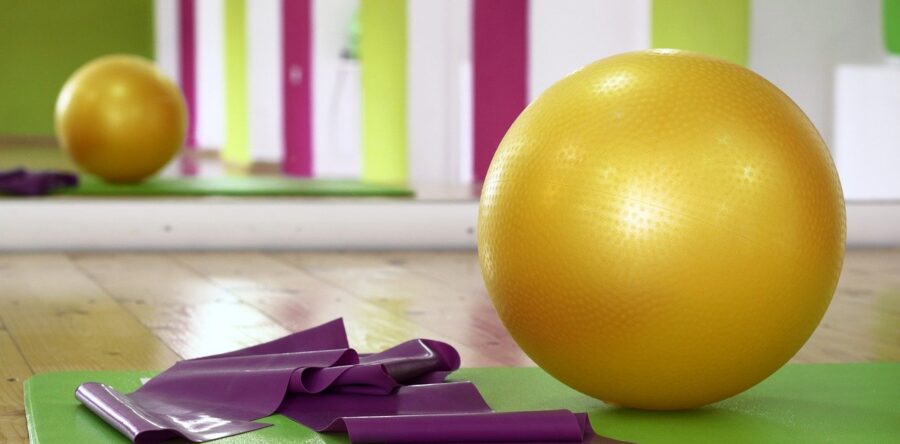Have you ever experienced a time when, wow, you were doing so great and getting back into shape, but then your back goes out AGAIN! Ugh! Generally, what I hear often from new patients … “Then my back went out… for no reason at all!” Well, there is usually a reason and so let’s take a closer look and get to the "Core" of the matter.
Core Muscle Retraining is key to recovery and a part of all our physical therapy programs at Evoke. I use the word retraining because muscles that become dysfunctional must be retrained to work properly and in synergy, prior to advancing to a strengthening program. This article, Core Training vs. Strengthening - What is the Difference and Why it Matters," by Diane Lee, explains this important difference and its impact on true recovery.
The core is the area bounded by your diaphragm, pelvic floor, abdominal wall and lower back and functions to stabilize and support the body during movement. The major core muscles include the diaphragm, pelvic floor, transversus abdominis, multifidus, internal and external obliques, rectus abdominis, erector spinae and longissimus thoracis. Having a strong and properly functioning core, helps protect our body from injury during simple day to day tasks, endurance activities or high performance sports.
Core Muscle Retraining
With all conditions, we treat the Whole Person and not just the symptoms!!
» Runners or sports athletes with nagging injuries or just looking to enhance performance
» Incontinence with or without exercise - walking, running, skiing, hiking
» Our new mommies that have back pain, muffin tops or prolapse
» Pelvic Floor Dysfunction- chronic or acute
» Anyone with any pain or injury
» Active Seniors wanting to stay active
Often overlooked, we pay special attention to the deepest layers or inner core including the pelvic floor, transversus abdominis, multifidus and diaphragm. We assess for the proper movement of the diaphragm together with the ability of your muscles to contract in the proper timing, amplitude, sequence and synergy with each other. The inner core is important because studies have shown that these muscles are activated in anticipation of movement; both preparing and stabilizing the body for movement. Dysfunction, injury, pain or surgery can cause alterations to these patterns including inhibition of muscles and the development of compensatory strategies for core deficiencies. Alterations in function can make us more susceptible to injury, re-injury or chronic pain.
For example, an individual with low back pain may have inhibition of one of the multifidus muscles on one side of the spine due to injury. The Multifidus muscle is a series of small deep back muscles, on either side of the spine. The multifidi play an important role in joint stabilization and act in extension, lateral flexion and rotation of the spine. Can you imagine how inhibition of one muscle segment on one side of the spine can be a problem? Even if pain resolves, continued inhibition and decreased stability at that segment can lead to joint degeneration and recurrence of pain.
Therefore, strengthening before addressing these deficits can impede progress, reinforce improper compensatory patterns and lead to re-injury or nagging problems. Our goal of physical therapy is to work together to restore the normal functioning of the inner core and synergy of movement followed by integration of all core muscle strengthening and performance training.
Treatment involves hands on facilitation by your therapist to correct deficit patterns as well as educating you to feel for and activate the right contraction with coordinated breath before engaging in movement of your body, arms or legs. Again, you may have developed compensatory strategies including breath holding, muscle substitution, postural changes or pelvic unleveling. Your therapist will cue you in on how to watch out for these substitutions. So remember, the first step is RETRAINING and it will take some concentration to get it right. But once you have retrained your inner core, your physical therapy program can progress to core strengthening exercises and functional performance training.
RESOURCES
- Spine Stabilization Training, Coursework in Advanced Masters In Orthopedic Physical Therapy; Touro College
- Pelvic Floor Continuing Education, Women's Health Section, APTA
- Lee, Diane. "Core Training vs. Strengthening - What is the Difference and Why it Matters".
- Freeman MD, Woodham MA, Woodham AW. "The Role of the Lumbar Multifidus in Chronic Low Back Pain: A Review." PM R, 2010;2:142-146
- Core Anatomy - Wikipedia
- Multifidus Muscle - Wikipedia
DISCLAIMER: The content on the blog for Evoke Physical Therapy and Wellness Center, LLC is for educational and informational purposes only, and is not intended as medical advice. The information contained on this blog should not be used to diagnose, treat or prevent any disease or health illness. Any reliance you place on such information is therefore strictly at your own risk. Please consult with your physician or other qualified health care professional before acting on any information presented here.
Read more

